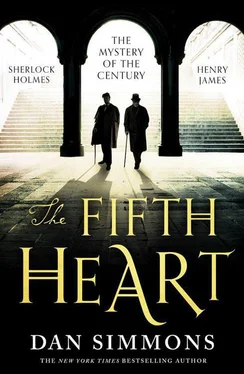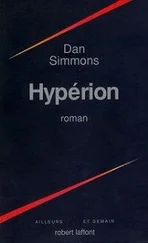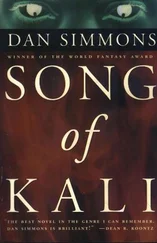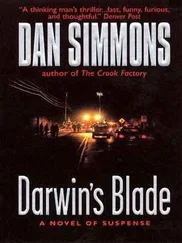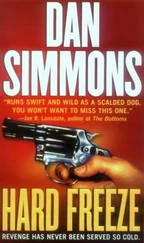The author also has “Wilson” mentioning that he was moving into the “ B’ s” in the encyclopedia at the time the Red-Headed League was dissolved and he lost his silly job. Holmes had noticed the recent 1889 Ninth Edition of the encyclopedia in a hallway bookcase, and Henry James rang for a manservant to fetch the first volume of the Britannica . After actually counting the words on an “average” page in the first section, James hobbled over to the room’s small writing desk, retrieved some foolscap and a pencil, and figured that the character of “Jabez Wilson” had copied some 6,419,616 words in eight weeks’ work . . . and that while copying for only four hours a day! With a little division on his foolscap, James averaged this to a rate of some 33,435 words per hour or a little over 557 words per minute. Extraordinary!
Ridiculous! The author, whether Watson or Conan Doyle, literally had not done his arithmetic.
On another page of the same story, the careless writer has Holmes, Watson, a constable, and others suffering a “long drive” through “an endless labyrinth of gas-lit streets”, even though their objective would have been only a short walk from where the party had started.
In another part of the story, Henry James could not stop himself from laughing out loud. Holmes has announced that the mystery facing him was a “three-pipe problem” and then drew his legs up into his chair and—using a disreputable black-clay pipe that James had seen the detective smoke while on their trip here—supposedly smoked three pipes of shag tobacco in fifty minutes. James knew that one shag of such rough tobacco in an hour would almost certainly ruin any man’s throat and nose membranes; three shags would probably kill a man.
In “The Boscombe Valley Mystery”, the Holmes character is his usual arrogant, condescending self to Watson—a man older and certainly more experienced in life and war than the so-called “consulting detective”—but he also continues to prove that he has no right to act that way. At the first news of a murder in the mythical “Boscombe Valley” near the very-real city of Ross in Herefordshire, Holmes has Watson join him in a pall-mall earliest-train-possible rush to the city and crime scene. But once Holmes arrives in Ross, he inexplicably takes two days off in the hotel there before venturing out to the outdoor crime scene where a man had died by having his skull caved in. Holmes even emphasizes the absolute importance of inspecting that crime scene “before it rains and all evidence is washed away”, but then is satisfied that the weather shall remain “No wind and not a cloud in the sky” by consulting a barometer which reports the pressure at 29.
Now Henry James was no meteorologist and to the best of his recollection he had never used a barometer reading as a plot point in any of his stories or novels, but he had spent enough time with farmers—both back in New England and in England and France—and with sea captains during his various crossings of the Atlantic to know that a reading of “29” does not insure good weather; indeed, if, with that reading, a serious rainstorm had not arrived, it was certainly on the way.
After a day lost not viewing the crime scene, Holmes again refers to the barometer reading of 29 as “promising fine weather” and proceeds to waste another day that should have been close to typhoon weather.
Holmes then solves the mystery largely due to inferring that the murdered man’s seemingly incomprehensible last words to his (accused-of-murder) son—“A rat”—actually must mean “Ballarat” in Australia. Therefore the murderer had to be from Ballarat. But even granted the identity of the murderer as Australian and Henry James’s personal lack of knowledge of the continent, one flip open of the first volume of the Encyclopaedia Britannica showed James that there were several other Australian towns and regions that ended with “arat”, including “Ararat”.
James’s dismay at the lack of proofreading—as well as the carelessness of the writing itself—was not diminished in the story called “The Man with the Twisted Lip” when Dr. John Watson’s wife, visited in the night by a distraught and veiled lady whom she soon sees to be a certain acquaintance known to her as “Kate Whitney”, says—“It was very sweet of you to come. Now, you must have some wine and water, and sit here comfortably and tell us all about it. Or should you rather that I sent James off to bed?”
James? thought Henry James in growing contempt. The gentleman in question, unless Mrs. Watson had a lover hiding under the table, had to be her husband, John Watson. Doesn’t this author even bother to proofread his work?
In the same story, Holmes reveals the true identity of a “filthy prisoner” by rubbing his face lightly with a large, wet sponge he’s been thoughtful enough to bring to the prison, thus removing—according to the author of the tale—layers of actor’s greasepaint. Henry James, who had spent much of the previous eighteen months traveling around England with an acting troupe putting on his first play, The American , knew from simple observation that Holmes’s “wet sponge” would have just mottled and muddled an actor’s disguise: all of the actors and actresses James had watched removing their make-up first had to carefully apply a layer of cold cream before beginning to remove theatrical make-up.
And so it went, story after story, idiocy after idiocy.
James set aside the collection only when a footman came up to announce that everyone was meeting in the parlor for tea or drinks before dinner. He did not have to feign his limp when going down, and at John Hay’s concerned questioning, James admitted that his gout—about which he’d written Hay the previous December—was indeed acting up.
The dinner, although so limited in number it was essentially diner en famille , was roast beef for which James had little appetite this particular evening. John Hay was expansive, happy and perfect as their host, Clara was kind and sure that everyone was involved in the conversation, “Jan Sigerson” described his pleasure at seeing the gleaming white Capitol and other such wonders—including what James considered the wedding-cake baroque-on-baroque monstrosity of the State Department just down the street, where Hay had worked for so many years—and James was quiet, save for nods of attention and various smiles of appreciation. The others must have put his quietness down to his gout, although it was more or less characteristic of Henry James at any table.
In truth, James was carefully observing this Sherlock Holmes/Jan Sigerson person. Yes, it had been he—James—who had recognized Holmes in the almost absolute darkness along the Seine, for despite the actor’s putty on the nose, added hair, and other make-up (none of which would come off with a simple pass of a wet sponge), the hawk-look of that lean face remained. But James was beginning to have a different feeling about both Holmes and about his own plan to talk to John Hay privately after dinner and there—with endless apologies—expose the hoax and humbug he’d brought to the Hays’ household.
No . . . tomorrow would serve. James saw how it would be better to wait until the real explorer and mountain-climber Clarence King exposed Holmes for the fraud he was. Or, failing that, the certainty of the Norwegian emissary tripping up Holmes’s clumsy and shallow disguise. Then James could act as shocked and deceived as everyone else at the table. It would be embarrassing, yes, but it wouldn’t necessarily put Henry James beyond the pale with these old friends. Holmes would be banished, James would apologize to John and Clara for his own unforgivable naïveté in believing the man, he would leave almost immediately to sail to England, and that would be that.
Читать дальше
